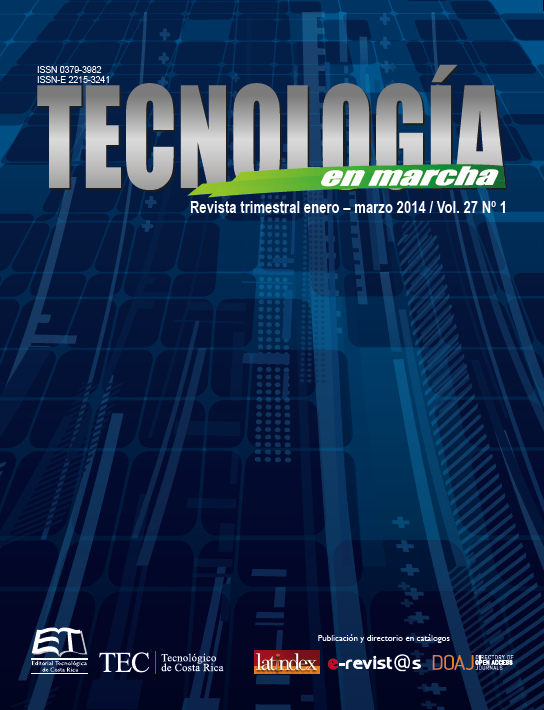Isolation and identification of pathogens of wild garlic (Allium sativum L.)
Main Article Content
Abstract
The garlic field (Allium sativum L.) in Costa Rica could become a profitable alternative for the production and diversification of the vegetable farmers. However, the type of vegetative propagation that it presents facilitates the transmission and dissemination of diseases, which produces a progressive weakening of the bulbs.
Currently, different options from chemical control are being searched, in order to reduce the ecological and environmental impact of the pathogens to it. Biologic control is one of them, but it presents difficulties in the isolation and accurate identification of pathogens associated to the decay that occurs in the soil. Therefore, the general objective of this research was to isolate and identify, at a species level, strains of Pseudomas marginalist, Peniciliium sp. and Sclerotium cepivorum, from vegetative material of garlic in field, for its utilization in future studies of biologic control of these diseases.
The followed methodology allowed us to isolate and identify P. marginalis with a high accurate percentage. Also, it allowed us to obtained single-spore cultures of Penicillium sp. and pure cultures of S.cepivorum. The described techniques constituted the basis for future works related to the plant diseases in the garlic production.
Article Details
Los autores conservan los derechos de autor y ceden a la revista el derecho de la primera publicación y pueda editarlo, reproducirlo, distribuirlo, exhibirlo y comunicarlo en el país y en el extranjero mediante medios impresos y electrónicos. Asimismo, asumen el compromiso sobre cualquier litigio o reclamación relacionada con derechos de propiedad intelectual, exonerando de responsabilidad a la Editorial Tecnológica de Costa Rica. Además, se establece que los autores pueden realizar otros acuerdos contractuales independientes y adicionales para la distribución no exclusiva de la versión del artículo publicado en esta revista (p. ej., incluirlo en un repositorio institucional o publicarlo en un libro) siempre que indiquen claramente que el trabajo se publicó por primera vez en esta revista.

